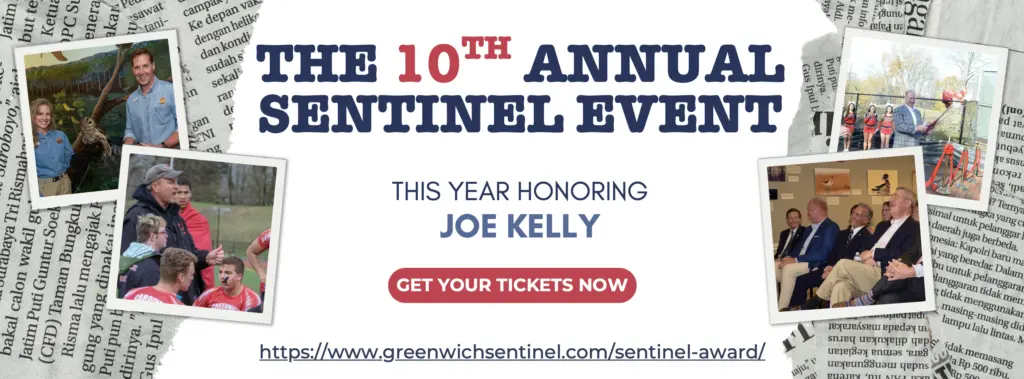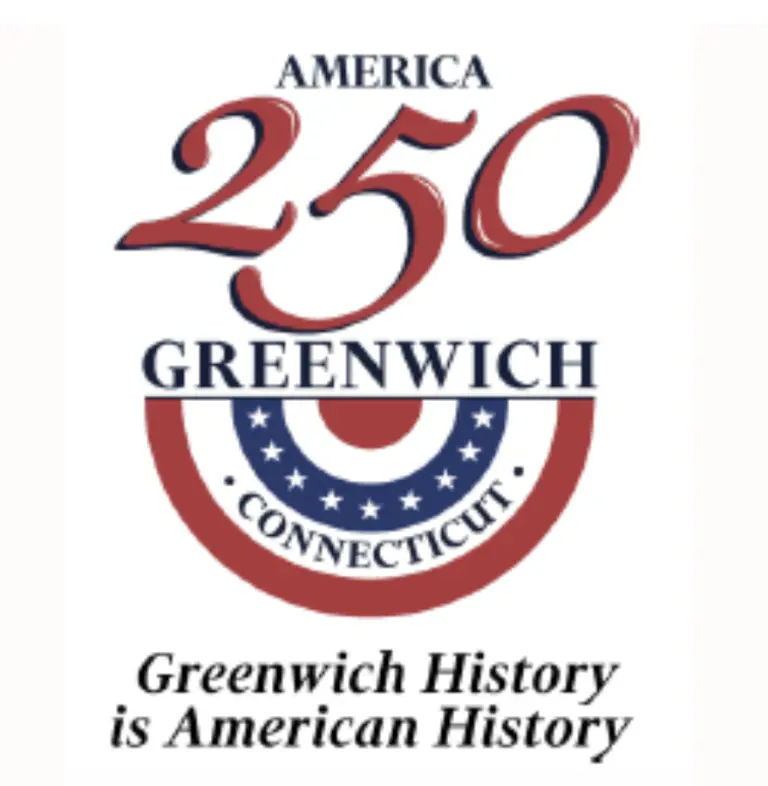 The Bruce Museum has been a staple in Greenwich for one hundred years, and now, with the launch of the new Bruce, it’s taking its commitment to art, science, education, and community to the next level. “Welcome to the new Bruce Museum,” Suzanne Leo, Chief Operating Officer of the Bruce Museum, greeted reporters and media outlets from across the state on Tuesday’s media tour.
The Bruce Museum has been a staple in Greenwich for one hundred years, and now, with the launch of the new Bruce, it’s taking its commitment to art, science, education, and community to the next level. “Welcome to the new Bruce Museum,” Suzanne Leo, Chief Operating Officer of the Bruce Museum, greeted reporters and media outlets from across the state on Tuesday’s media tour.
After a period of revitalization, the Bruce Museum unveiled a completely reimagined and reinvented institution focused on art, science, education, and community. The museum’s new building features a state-of-the-art auditorium, the Steven and Alexandra Cohen education wing, and expanded galleries for its art and science programs.
 Bruce Museum Executive Director Robert Wolterstorff emphasized that the Bruce Museum is a museum of art and science, equally. “Art and science are two different ways of looking at the world, but I want to make this point, they’re not dissimilar because they both involve empirical observation and they’re both creative disciplines,” said Wolterstorff, “They involve creative inspiration.” By showcasing the connections between art and science, the museum is creating a unique experience for visitors that challenges them to see the world in a different way and explore the meeting point between the two.
Bruce Museum Executive Director Robert Wolterstorff emphasized that the Bruce Museum is a museum of art and science, equally. “Art and science are two different ways of looking at the world, but I want to make this point, they’re not dissimilar because they both involve empirical observation and they’re both creative disciplines,” said Wolterstorff, “They involve creative inspiration.” By showcasing the connections between art and science, the museum is creating a unique experience for visitors that challenges them to see the world in a different way and explore the meeting point between the two.
“This extraordinary building has made so much possible and we have been able to accomplish many firsts through our exhibition program for the new Bruce,” explained Margarita Karasoulas, curator of art at the Bruce Museum. The museum’s expanded gallery space has made it possible to showcase larger, cutting-edge works of modern and contemporary art that were not previously feasible. The museum now also features dedicated gallery spaces for specific media, including works on paper and sculpture galleries. Moreover, the William L. Richter Art Wing features the museum’s first-ever permanent collection gallery which holds the museum’s six original pieces of impressionist art.

The inaugural exhibitions include a comprehensive survey of Lois Dodd’s work, which explores her observational approach to painting. “We are debuting the largest survey devoted to the work of Lois Dodd,” spoke Karasoulas, “Dodd’s work is justly celebrated in this exhibition, Lois Dod: Natural Order, which is the artist’s first major museum show in the New York metropolitan area.”
Also showcased are exhibitions “James Castle Thresholds” and “Material Matters: The Sculpture of Elie Nadelman” which explore themes of thresholds and in-between spaces, and the artist’s experimentation with materials, respectively. In addition, “The expanded galleries also allow us to feature large scale, cutting edge works of modern and contemporary art that the existing building had simply not made possible,” explained Karasoulas.
 Curator of science, Daniel Ksepka spoke about the new science galleries, “for a long time we have tackled big ideas in a relatively modest space.” With the revitalization of the Bruce Museum, the exhibition space has more than doubled featuring three different types of galleries, the permanent natural history galleries, the rotating science exhibition gallery, and the Robert R. Wiener mineral gallery.
Curator of science, Daniel Ksepka spoke about the new science galleries, “for a long time we have tackled big ideas in a relatively modest space.” With the revitalization of the Bruce Museum, the exhibition space has more than doubled featuring three different types of galleries, the permanent natural history galleries, the rotating science exhibition gallery, and the Robert R. Wiener mineral gallery.
The Rotating Science Exhibition Gallery’s first show is Penguin’s Past and Present, “I promise you,” said Ksepka, “if you enter this gallery, you’ll learn something you did not know about penguins.” The exhibition promises to be special for visitors, showcasing remarkable discoveries about penguins. “You will meet a 200-pound Kairuku penguin, a species that went extinct 27 million years ago. You will see possibly the cutest animal alive today, the Little Blue Penguin,” noted Ksepka, to whom the topic is of personal significance, as he has dedicated most of his research career to understanding the evolution of penguins. “If you don’t learn anything new, you need to email me and you can join my research program,” he joked.

The Robert R. Wiener Mineral Gallery is another exciting addition to the Bruce Museum, featuring around 200 stunning minerals, most of which were donated to the museum’s permanent collection by Mr. Wiener. “At the root, this exhibit is about color, shape, and light, and it is located at the nexus of art sciences, right between the sculpture gallery and the painting gallery,” explained Ksepka. This gallery is perfectly located at the intersection of art and science, which is something that the Bruce Museum specializes in.
But the new Bruce is not just about exhibits and galleries. It’s also about education and community. The museum has always been a hub for learning, but now it has even more resources to offer. “With three renovated classrooms, a dedicated education entrance, and expanded exhibition spaces, the museum’s educators will be able to accommodate visitors like never before,” explained Manager of School and Tour Services, Kathleen Holko.
 The Bruce Museum has always been committed to making the exploration and appreciation of the arts and sciences accessible and equitable to all visitors, and the expanded spaces will allow them to expand their program offerings to reach new audiences. According to Holko, this includes “translated labels and materials for the Spanish-speaking community, employment, and programming opportunities for teens, and increased options for hands-on workshops for adult audiences.”
The Bruce Museum has always been committed to making the exploration and appreciation of the arts and sciences accessible and equitable to all visitors, and the expanded spaces will allow them to expand their program offerings to reach new audiences. According to Holko, this includes “translated labels and materials for the Spanish-speaking community, employment, and programming opportunities for teens, and increased options for hands-on workshops for adult audiences.”
The new Cohen Education Link, named for Steven and Alexandra Cohen, who are longtime supporters of education programs at the Bruce, is a shining example of the museum’s commitment to education. This new space will enable the museum’s educators to offer more diverse programs, including lectures, film screenings, and other events in the new auditorium. It will also provide a space where leaders in art and science can come and share their findings with museum visitors. “The potential and possibility for education and visitor engagement at the Bruce is limitless thanks to this expansion, ” said Holko.
 And then there’s the community aspect of the museum. Museums are often considered to be important community institutions that reflect the values and culture of their surrounding communities. However, the impact of museums on building community goes far beyond that. In fact, museums have the potential to create connections and foster a sense of belonging among individuals, which in turn strengthens the community as a whole. “People come here and they meet and they make connections. They meet at programs and events,” spoke Wolterstorff, “They connect as members of the board or committees. Through museums, people make friendships that can last a lifetime.“ Museums serve as gathering places for people of all backgrounds and ages, offering a shared space for engagement with culture and ideas.
And then there’s the community aspect of the museum. Museums are often considered to be important community institutions that reflect the values and culture of their surrounding communities. However, the impact of museums on building community goes far beyond that. In fact, museums have the potential to create connections and foster a sense of belonging among individuals, which in turn strengthens the community as a whole. “People come here and they meet and they make connections. They meet at programs and events,” spoke Wolterstorff, “They connect as members of the board or committees. Through museums, people make friendships that can last a lifetime.“ Museums serve as gathering places for people of all backgrounds and ages, offering a shared space for engagement with culture and ideas.
The new Bruce Museum’s auditorium and community spaces will be essential to the museum’s conception, serving as a hub for socialization, networking, and community building. The new museum’s cafe and event spaces will be available for rent to the community, providing a gathering place for celebrations, meetings, and other events. “People won’t come here just for museum events,” noted Wolterstorff, ”They’ll come for a friend’s birthday party, for anniversary celebrations, for a corporate retreat, for weddings and bar mitzvahs. The Bruce will be a community hub. It’s going to be the place to be in Greenwich.”
 Finally, we have to talk about the design of the new Bruce. “It’s a simple fact of our profession as architects, that great projects require great clients,” said Steve Dumez, the lead designer of the new Bruce. Architectural design has the power to connect people to place in profound and meaningful ways. This is the vision that Steve Dumez, the lead designer of the new Bruce, and his team at Eskew Dumez Ripple had in mind when embarking on the New Bruce project.
Finally, we have to talk about the design of the new Bruce. “It’s a simple fact of our profession as architects, that great projects require great clients,” said Steve Dumez, the lead designer of the new Bruce. Architectural design has the power to connect people to place in profound and meaningful ways. This is the vision that Steve Dumez, the lead designer of the new Bruce, and his team at Eskew Dumez Ripple had in mind when embarking on the New Bruce project.
”Our practice has long advocated that design functions best when it grows from its roots, or perhaps in this case from its rock outcroppings,” joked Dumez. The best design grows out of the site around it, both architecturally and socially, becoming a beacon for the entire Greenwich community. The new Bruce is not just a museum; it is a vital community infrastructure that connects people to their history, culture, and community.
Are the exhibitions worth the hype? Absolutely, and even more than you can imagine. Take a glimpse of what’s in store with our captivating featured images, and experience the full wonder in person on opening day this Sunday, April 2nd, and for years to come. As Wolterstorff aptly puts it, “Museums are all about bringing objects, culture, and ideas to life in real space.”






